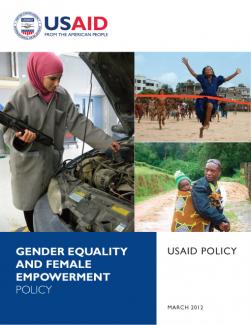"We know that long-term, sustainable development will only be possible when women and men enjoy equal opportunity to rise to their potential. But today, women and girls continue to face disadvantages in every sector in which we work, and in other cases, boys are falling behind. With this policy, we can ensure our values and commitments are reflected in durable, meaningful results for all."
- USAID Administrator Rajiv Shah
BACKGROUND
Gender equality and female empowerment are fundamental to the realization of human rights and key to effective and sustainable development outcomes. Although many gender gaps have narrowed over the past two decades, substantial inequalities remain across every development priority worldwide – from political participation to economic inclusion – and remain a significant challenge across all sectors in which USAID works, particularly in low-income and conflict-affected countries and among disadvantaged groups.
Building on the Agency’s decades of experience, the new policy provides guidance on pursuing more effective, evidence-based investments in gender equality and female empowerment and incorporating these efforts into our core development programming.
GOAL
The goal of this policy is to improve the lives of citizens around the world by advancing equality between females and males, and empowering women and girls to participate fully in and benefit from the development of their societies.
OUTCOMES
In order to achieve this goal, USAID investments are aimed at three overarching outcomes:
These outcomes will be adapted and translated into specific results with associated targets and indicators in strategic planning at the country and project level.
- Reduce gender disparities in access to, control over and benefit from resources, wealth, opportunities and services - economic, social, political, and cultural;
- Reduce gender-based violence and mitigate its harmful effects on individuals; and
- Increase capability of women and girls to realize their rights, determine their life outcomes, and influence decision-making in households, communities, and societies.

